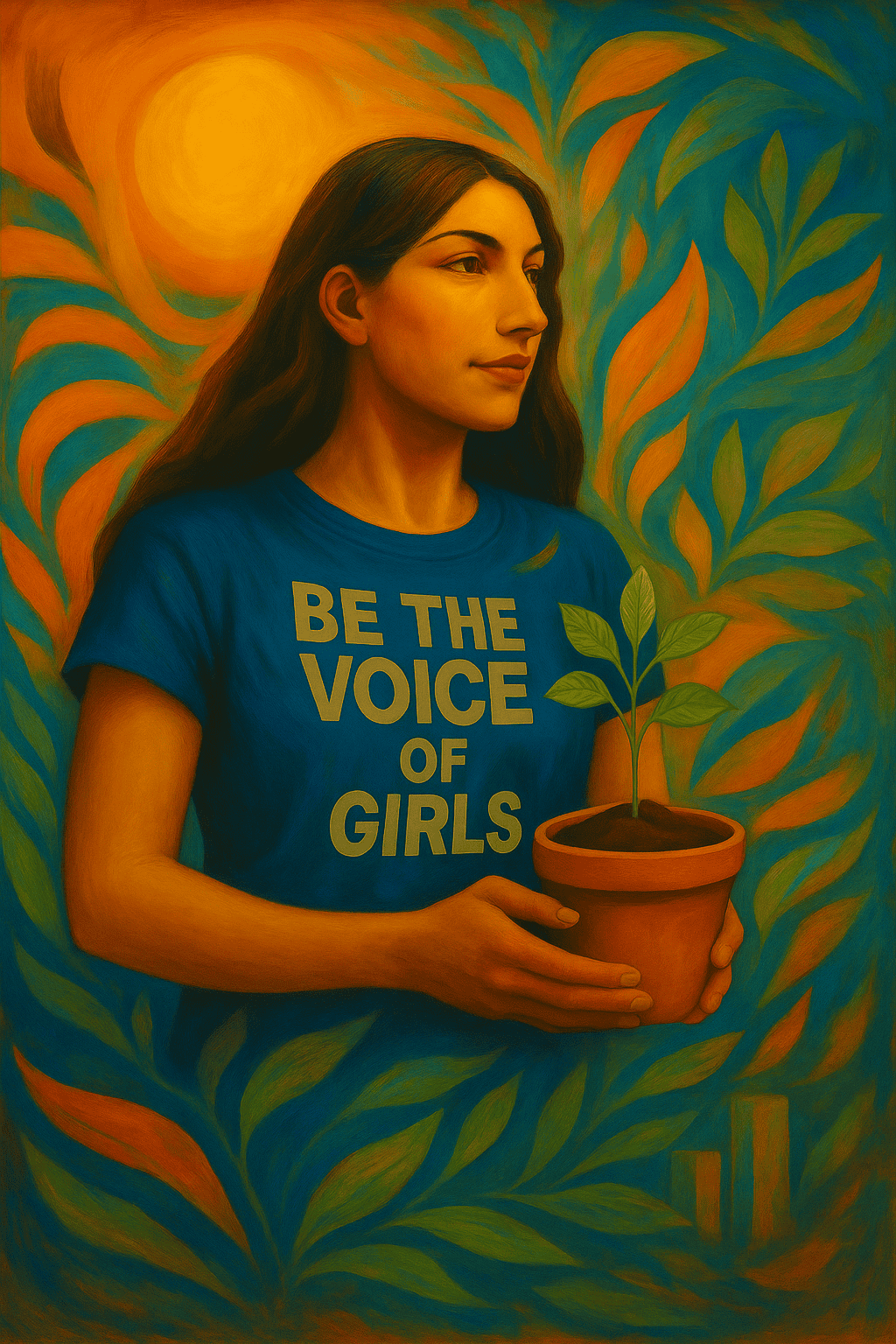By the time Andrew McCrea finally found the right microphone, the session had already taken root—screen freezes, overlapping greetings, and a warm hum of laughter rippling across continents. It was the kind of comfortable chaos that only happens in a BVG session. Part class, part community, part something else entirely.
Andrew, a long-time friend of the program and an American radio journalist, didn’t bring slides of skyscrapers or snapshots of landmarks that day. Instead, he invited us into his field. Literally. A patch of Midwest farmland, where corn pushes up through last year’s soil and no-till techniques quietly shape the future of sustainable agriculture.
He showed the girls how new seedlings emerge between the remnants of last season’s crop. How some corn is genetically modified to survive herbicides. How rotating with soybeans can replenish the soil. But the lesson didn’t stay technical for long. The girls leaned in—not just to learn, but to ask. One questioned whether sweet corn’s flavor meant it was unnatural. Another wondered how they’d know if something was GMO. And Andrew, with the ease of someone who welcomes wonder, answered each one with patience and warmth.
Then, as naturally as a seedling gives way to a blossom, the conversation shifted—from the soil beneath our feet to the rituals that mark our growth.
Andrew began sharing prom stories. Not just of his children’s sparkling dresses and cleaned-up pickup trucks, but of small-town traditions, photo rituals, and dance floor memories that shape American youth. And in response, the girls lit up—not with envy, but with resonance.
They spoke of their own spring traditions. The May 19 Youth and Sports Day, where students write their wishes and release them into rivers. School festivals filled with tug-of-war and shared food. Graduation nights marked with music, sometimes even a splash into the nearest pool.
It became clear we were no longer just talking about farming or fashion. What we were exploring was that quiet, fertile space between seeds and stories—between what we grow, and who we become.
Some girls shared photos of the plants they had just begun to grow with BVG—cucumbers, tomatoes, even pomegranates. Others confessed a quiet wish to study abroad. They asked about scholarships, about high school in the U.S., about how futures are chosen. And Andrew, rather than provide a roadmap, promised more stories next time.
These moments are what make Be the Voice of Girls something more than a language class. Where confidence sprouts in the form of a question. Where identity unfolds across languages, across oceans. Where a cucumber planted in a recycled yogurt cup becomes a symbol of something larger.
Empowerment doesn’t always declare itself with a banner or a slogan. Sometimes it whispers through the crackle of a shared Zoom screen. Sometimes it takes shape in a girl’s hands as she presses soil around a seed. Sometimes, it begins with a question that no one else had thought to ask.
And in the space between seeds and stories, something remarkable is already blooming.


